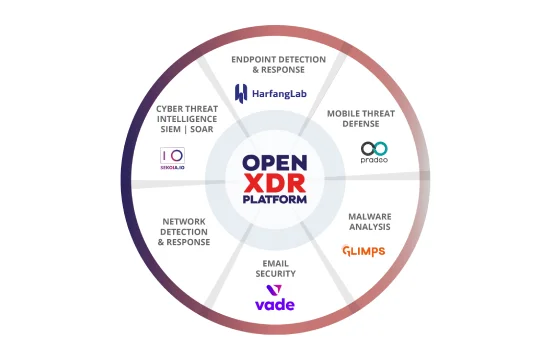What is Open XDR?
Open Extended Detection and Response (Open XDR) represents a transformative approach to cybersecurity, offering organizations a comprehensive and flexible way to detect, investigate, and respond to threats across their digital environments. Unlike traditional security solutions that focus on isolated components—like endpoints or networks—Open XDR takes a holistic view, integrating data from multiple sources to provide a unified defense strategy. But what exactly does this mean, and how does it differ from other security frameworks? Let’s break it down.
At its core, Open XDR is an evolution of Extended Detection and Response (XDR),a term coined to describe platforms that combine endpoint detection, network monitoring, and threat intelligence into a single system. What sets Open XDR apart is its emphasis on openness and interoperability. Traditional XDR solutions are often proprietary, locking users into a specific vendor’s ecosystem. Open XDR, however, is designed to work seamlessly with a variety of tools, platforms, and data sources—whether they’re from third-party providers or existing in-house systems. This flexibility allows organizations to customize their security stack without being tethered to a single vendor, making it a game-changer for businesses of all sizes.
So, how does Open XDR function in practice? It aggregates and correlates data from endpoints, cloud environments, networks, and even email systems, using advanced analytics and artificial intelligence to identify potential threats. By pulling in this diverse range of signals, Open XDR can detect complex attacks—like ransomware or insider threats—that might go unnoticed by siloed tools. Once a threat is identified, the platform provides security teams with actionable insights, enabling faster investigation and response. This end-to-end visibility reduces the time it takes to mitigate risks, a critical factor in today’s fast-moving threat landscape.
One of the standout benefits of Open XDR is its adaptability. Cybersecurity needs vary widely between industries and organizations. A small business might prioritize cost-effective cloud security, while a large enterprise might need robust integration with legacy systems. Open XDR’s vendor-agnostic nature means it can scale and evolve alongside these unique requirements. Additionally, it eliminates the complexity of managing multiple standalone tools, streamlining workflows for security teams often stretched thin by alerts and false positives.
In essence, Open XDR is about breaking down barriers—between tools, teams, and data—to create a more proactive and efficient cybersecurity posture. As cyber threats grow more sophisticated, this open, integrated approach is quickly becoming a cornerstone of modern defense strategies, empowering organizations to stay one step ahead of attackers.
Open XDR vs Traditional XDR
When it comes to modern cybersecurity, Extended Detection and Response (XDR) has emerged as a powerful framework for unifying threat detection and response. However, not all XDR solutions are created equal. The distinction between Open XDR and Traditional XDR is significant, offering organizations different paths to securing their digital environments. Understanding these differences can help businesses choose the approach that best aligns with their needs, resources, and long-term goals. Let’s explore how Open XDR stacks up against its traditional counterpart.
Traditional XDR is a vendor-driven solution that integrates detection and response capabilities across endpoints, networks, and cloud environments. Typically offered as a closed ecosystem, it relies heavily on the tools and technologies provided by a single vendor. This can streamline deployment and ensure compatibility within the vendor’s suite, making it appealing for organizations already invested in a specific provider’s products. However, this rigidity comes with trade-offs. Traditional XDR often lacks flexibility, limiting integration with third-party tools or existing security investments. If a company uses a mix of solutions from multiple vendors, Traditional XDR may struggle to incorporate those data sources effectively, leaving gaps in visibility.
Open XDR, by contrast, takes a more inclusive and adaptable approach. Rather than being tied to one vendor’s ecosystem, Open XDR is designed to work with a broad range of security tools, platforms, and data feeds—regardless of their origin. This openness allows organizations to leverage their current infrastructure while incorporating new technologies as needed. For example, a business could combine its existing endpoint protection platform with cloud security tools and network monitoring systems, all feeding into an Open XDR framework. This interoperability not only maximizes the value of prior investments but also future-proofs the security stack against evolving threats and technological shifts.
Another key difference lies in customization and control. Traditional XDR often delivers a pre-configured, one-size-fits-all solution, which can be efficient but may not fully address unique organizational needs. Open XDR, however, empowers security teams to tailor the platform to their specific workflows, threat profiles, and compliance requirements. This flexibility can be a game-changer for industries with specialized demands, such as healthcare or finance. Additionally, Open XDR’s reliance on advanced analytics and AI enables it to process diverse data sets more effectively, providing richer insights and reducing the noise of false positives—a common frustration with more rigid systems.
Ultimately, the choice between Open XDR and Traditional XDR hinges on priorities. Traditional XDR suits organizations seeking simplicity within a single vendor’s ecosystem, while Open XDR offers freedom, scalability, and a forward-thinking approach to tackling today’s complex cyber threats.
Why Choose Open XDR for Your Business?
In an era where cyber threats are increasingly sophisticated and pervasive, businesses need security solutions that are both robust and adaptable. Open Extended Detection and Response (Open XDR) has emerged as a compelling choice for organizations looking to strengthen their defenses without sacrificing flexibility or breaking the bank. But why should your business consider Open XDR over other cybersecurity options? The answer lies in its unique blend of integration, scalability, and efficiency—attributes that make it a standout solution for companies of all sizes and industries.
One of the primary reasons to choose Open XDR is its ability to unify your security operations. Unlike traditional tools that focus narrowly on endpoints or networks, Open XDR pulls data from across your entire digital ecosystem—endpoints, cloud services, email systems, and more—into a single, cohesive platform. This comprehensive visibility allows your security team to detect threats that might slip through the cracks of siloed systems, such as multi-stage attacks or subtle insider threats. By correlating data from diverse sources and leveraging advanced analytics, Open XDR delivers actionable insights, reducing response times and minimizing damage when incidents occur.
Flexibility is another major advantage. Open XDR’s vendor-agnostic design means it integrates seamlessly with your existing security tools, whether they’re from industry giants or niche providers. This is a critical benefit for businesses that have already invested in a mix of solutions or want to avoid being locked into a single vendor’s ecosystem. Instead of overhauling your infrastructure, Open XDR enhances what you already have, maximizing ROI and allowing you to adopt new technologies as your needs evolve. For growing businesses, this scalability ensures your security can keep pace with expansion without requiring constant reinvestment.
Cost-effectiveness also plays a big role. Managing multiple standalone security tools can strain budgets and overburden IT teams with repetitive tasks and alert fatigue. Open XDR streamlines these processes by consolidating detection, investigation, and response into one platform, reducing operational complexity. This efficiency not only cuts costs but also frees up your team to focus on strategic priorities rather than chasing false positives. For small and medium-sized businesses with limited resources, this can be a game-changer, leveling the playing field against larger competitors.
Finally, Open XDR future-proofs your business against an ever-changing threat landscape. Its open architecture supports continuous updates and integration with emerging technologies, ensuring you stay ahead of cybercriminals. For any organization aiming to build a resilient, adaptable, and efficient security posture, Open XDR offers a clear path forward.






